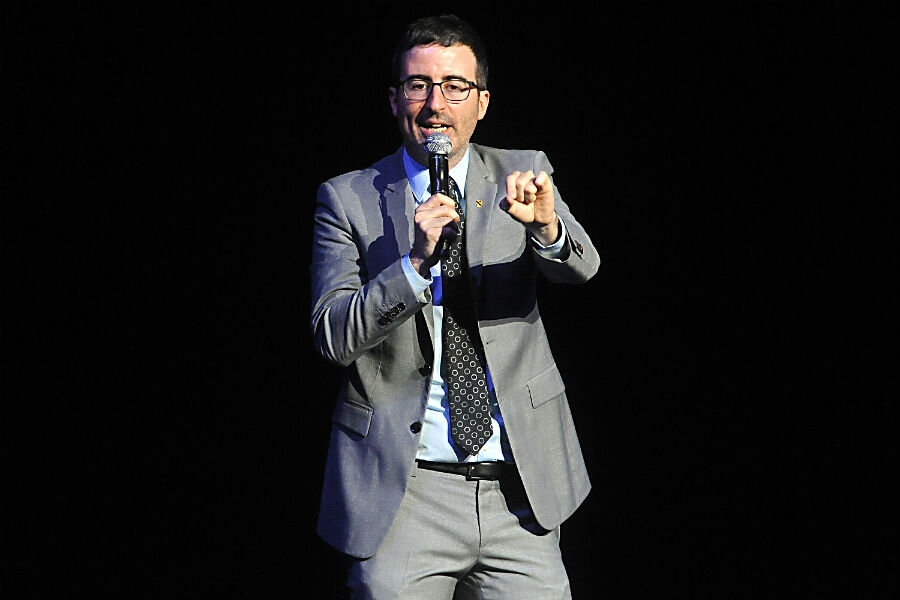What does John Oliver's latest stunt say about the nation's debt issues?
Loading...
Television host and comedian John Oliver has pulled his fair share of stunts since his satirical news program "Last Week Tonight" began its run in 2014, but his latest effort may have been his biggest yet.
Amid his usual lampooning of politics, society, and whatever else he sees fit, Mr. Oliver turned his laser-focused reporting on the issue of debt in the United States. And after a typically in-depth report on the topic of debt buyers, Oliver went on to hand out the largest award ever given out by a television program: the forgiveness of nearly $15 million owed by around 9,000 debtors across the country.
Oliver's breakdown of the American debt buying business covered the ins and outs of the industry in which companies or agencies purchase information on debt that is unlikely to be collected, then attempt to collect from debtors themselves or simply re-sell the debt. Debt buyers utilize methods ranging from the legal system to scare tactics in order to reclaim money that is technically owed to them, despite having bought it for pennies on the dollar from the original creditor.
"Now clearly, this is only going to help the 9,000 people whose medical debt we bought," Oliver said on-air to introduce his massive debt forgiveness. "The larger issue is: we need much clearer rules and tougher oversight to protect consumers from potentially predatory companies like the one that we set up," he jokingly summed up before purchasing – and subsequently forgiving – $14,922,261.76 in medical debt.
Oliver's point that the industry needs more oversight was backed up by his incorporation of Central Asset Recovery Professionals, Inc. for $50 in April. He explained that his own debt buying business was quickly offered the millions of dollars of debt he was soon to forgive, for less than $60,000 total. The portfolio was made up of debt from medical bills that had passed the statute of limitations in Texas, meaning the debt was no longer legally claimable.
Oliver's major forgiveness move certainly lightened the load for the thousands of people whose old expenses he'd just cleared away, but Americans collectively carry $12.25 trillion in household debt, ranging from other medical charges to student loans and mortgages. And while Oliver is not the first to forgive millions of dollars in debt, the issue remains for millions of Americans.
According to Gallup, 11 percent of adults in the United States are currently uninsured. That's a drop from the 2013 levels of around 18 percent before the implementation of the Affordable Care Act, but more than 28 million Americans currently have no way to pay for medical bills if they need care. Others carry debt accrued from before the implementation of ACA. And having insurance does not guarantee coverage of medical costs; a couple highlighted by Oliver racked up $80,000 over four days of treatment that could not be covered by insurance.
Student loans can also leave people working to pay off debt for years. Even with federal initiatives aimed at reducing the burden for some students, most leave school with an average of around $30,000 in debt and the national student loan debt total continues to climb.
While medical expenses can be unavoidable and loans for college seem like a necessary burden for many, households are also commonly strained by debt from credit card spending. According to a Harris Poll survey and information collected by NerdWallet, the average household carries nearly $6,000 in credit card debt and more than $15,000 in total debt, numbers that can become haunting with debt buying agencies seeking to collect and no television host around to help.
Oliver cleared away the debt for the thousands contained within the portfolio he received for his phony company, but the challenge of paying off debt and fending off sometimes fraudulent debt buyers remains a persistent one in the US. The Federal Trade Commission is aware of often questionable practices employed in the industry, and aims to make self-regulation an effective tool for debt-based businesses.






